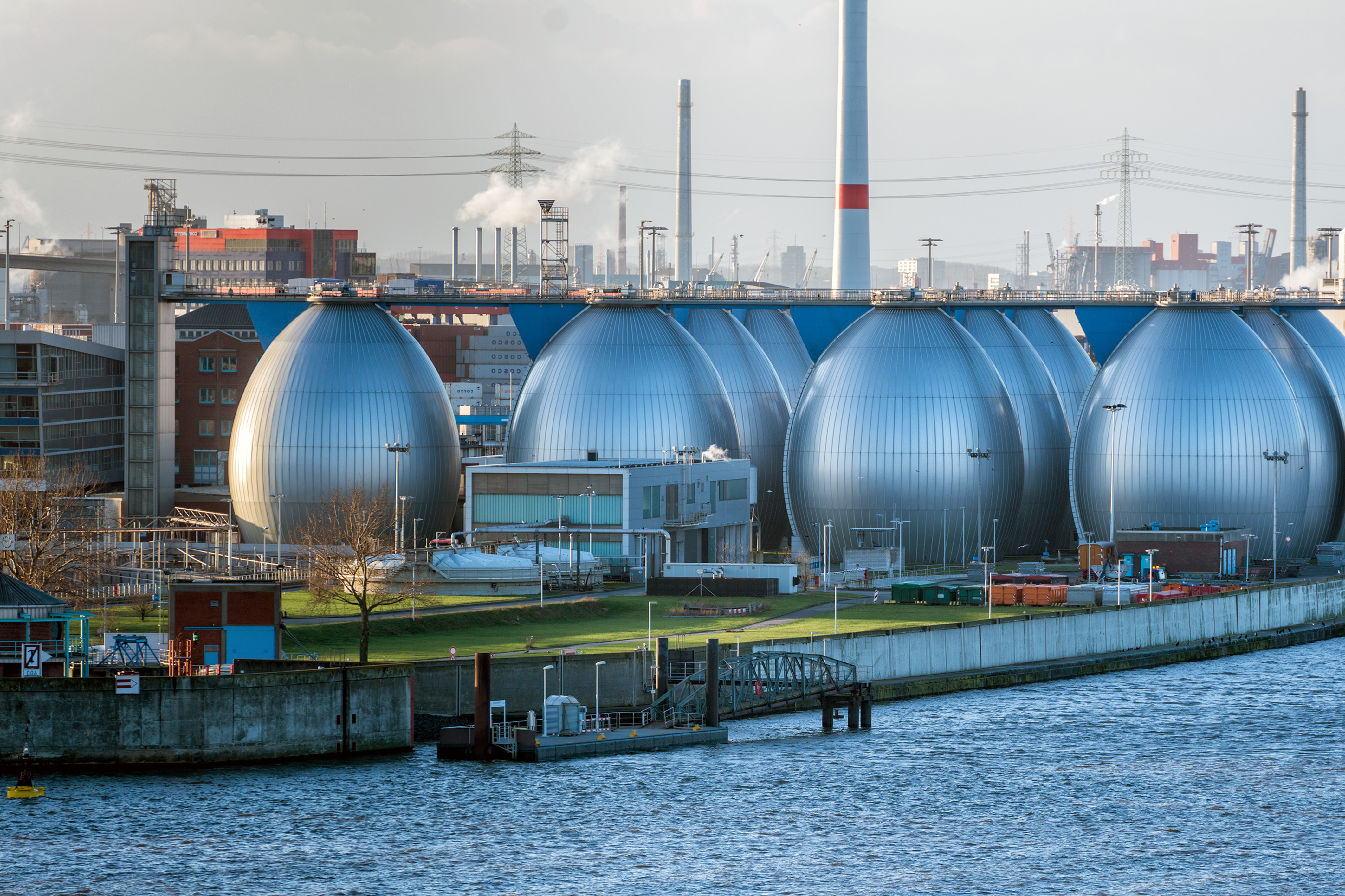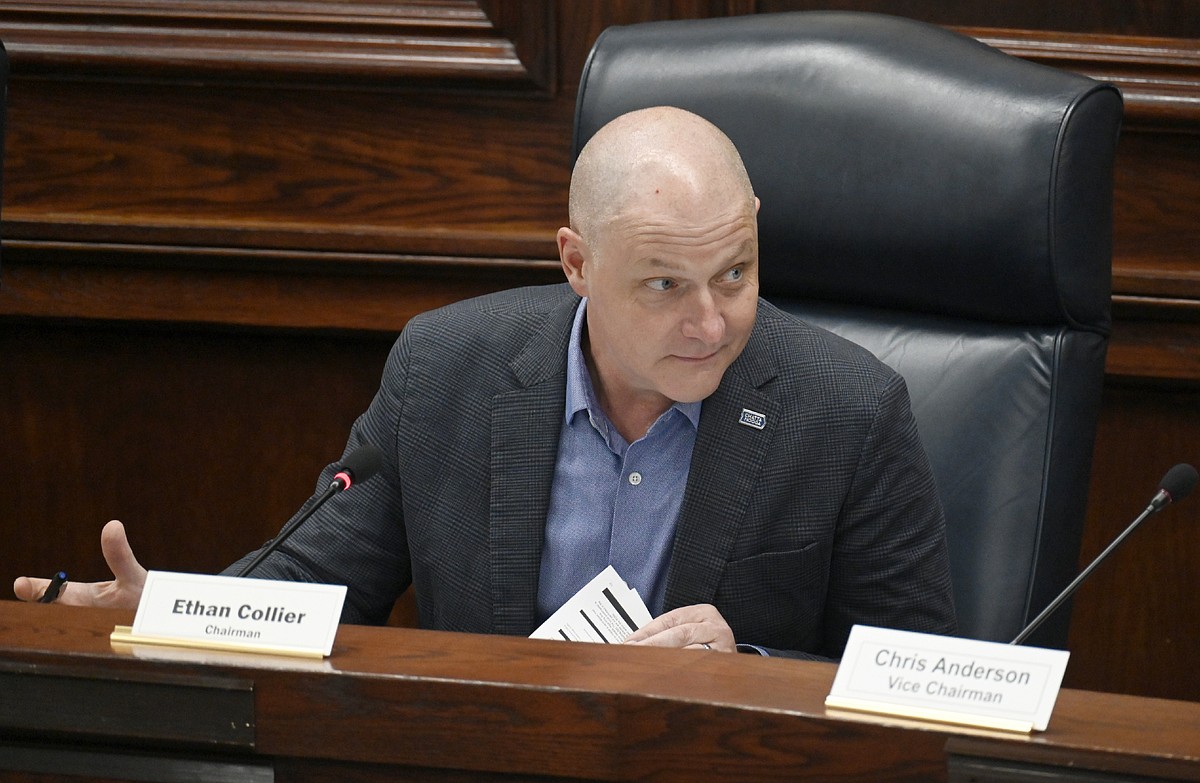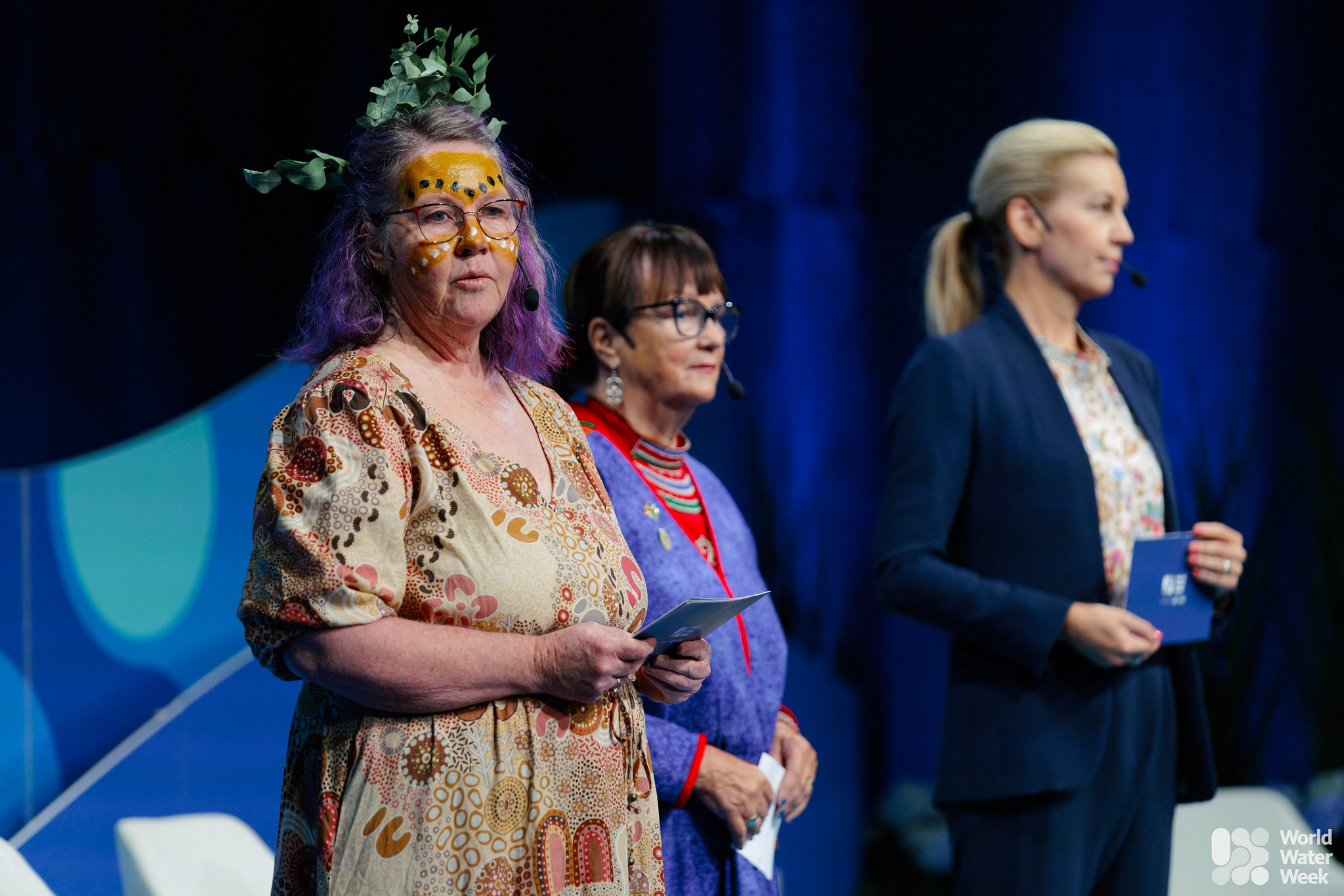Orange County’s Groundwater Replenishment System as a scalable model for water security – Smart Water Magazine

Report on the Groundwater Replenishment System (GWRS) as a Model for Sustainable Water Management
Financial Viability and Strategic Planning
The economic success of the Groundwater Replenishment System (GWRS) provides a critical case study for international water infrastructure projects. Its viability demonstrates that complex, high-performance water reuse systems can be successfully financed through strategic, long-term planning. This approach is fundamental to achieving **Sustainable Development Goal 17 (Partnerships for the Goals)** by aligning diverse stakeholders early in the project lifecycle.
Key financial and strategic takeaways from the GWRS model include:
- Diversified Funding Streams: Layered financing from multiple sources is essential for securing large-scale capital investment.
- Early Stakeholder Alignment: Gaining consensus among public, private, and regulatory bodies from the outset is crucial for project stability and success.
- Phased Expansion: Building financial resilience into the project plan allows utilities to scale infrastructure in response to evolving demand and regulatory landscapes, ensuring long-term sustainability.
Global Influence and Alignment with Sustainable Development Goals (SDGs)
International Recognition and Knowledge Sharing
The Orange County Water District (OCWD) has received significant global recognition for its pioneering work, most notably the 2014 Lee Kuan Yew Water Prize. This award acknowledged the success of GWRS and its predecessor, Water Factory 21, in establishing potable reuse as a viable solution to water scarcity. The project’s influence is evident in Singapore’s NEWater initiative, which adapted OCWD’s technological and public engagement strategies. This global knowledge transfer directly supports **SDG 17 (Partnerships for the Goals)** by sharing innovative solutions for global challenges.
A core component of this strategy has been a sustained public communication effort, including facility tours for over 60,000 visitors, which has been instrumental in building public trust and normalizing potable water reuse.
Contribution to the 2030 Agenda for Sustainable Development
The GWRS project serves as a practical implementation of several key Sustainable Development Goals:
- SDG 6: Clean Water and Sanitation – By treating wastewater to potable standards and recharging groundwater basins, GWRS directly advances Target 6.3 (improving water quality and increasing reuse) and Target 6.4 (increasing water-use efficiency and ensuring sustainable water supplies).
- SDG 11: Sustainable Cities and Communities – The system enhances water security and builds resilience against climate-related pressures like drought, contributing to Target 11.5 by making urban communities safer and more sustainable.
- SDG 12: Responsible Consumption and Production – GWRS exemplifies the transition to a circular economy for water. It shifts from a linear “use and dispose” model to a circular one, directly supporting Target 12.2 on the sustainable management and efficient use of natural resources.
A Blueprint for Circular Water Systems
Transitioning from Linear to Circular Models
The GWRS project provides a proven blueprint for cities worldwide facing water security challenges, with similar projects emerging in Texas, Arizona, and Australia. It validates the transition from linear to circular water management, demonstrating that potable reuse is not merely a concept but a feasible, scalable, and sustainable reality.
The success of GWRS is rooted in a holistic architecture that integrates:
- Advanced Technology
- Effective Governance
- Robust Regulatory Frameworks
- Strategic Public Communication
For water professionals, the GWRS model offers clear lessons: securing future water supplies in alignment with the Sustainable Development Goals requires embracing circular principles, where potable reuse is an essential and proven component.
1. Relevant Sustainable Development Goals (SDGs)
- SDG 6: Clean Water and Sanitation
- SDG 9: Industry, Innovation, and Infrastructure
- SDG 11: Sustainable Cities and Communities
- SDG 12: Responsible Consumption and Production
- SDG 17: Partnerships for the Goals
2. Specific SDG Targets
-
SDG 6: Clean Water and Sanitation
- Target 6.3: By 2030, improve water quality by reducing pollution, eliminating dumping and minimizing release of hazardous chemicals and materials, halving the proportion of untreated wastewater and substantially increasing recycling and safe reuse globally.
Explanation: The article is centered on the Groundwater Replenishment System (GWRS), which “was among the first in the world to produce potable-quality water from treated wastewater,” directly addressing the goal of increasing safe water reuse. - Target 6.a: By 2030, expand international cooperation and capacity-building support to developing countries in water- and sanitation-related activities and programmes, including water harvesting, desalination, water efficiency, wastewater treatment, recycling and reuse technologies.
Explanation: The article highlights that the GWRS model offers “transferable insights for cities confronting water security issues” and has inspired projects in other countries like Singapore and Australia, demonstrating international cooperation and knowledge sharing. - Target 6.b: Support and strengthen the participation of local communities in improving water and sanitation management.
Explanation: The article emphasizes the importance of public engagement, noting that “Over 60,000 people have toured GWRS, part of a long-term effort to build trust and normalise the concept of potable water reuse.”
- Target 6.3: By 2030, improve water quality by reducing pollution, eliminating dumping and minimizing release of hazardous chemicals and materials, halving the proportion of untreated wastewater and substantially increasing recycling and safe reuse globally.
-
SDG 9: Industry, Innovation, and Infrastructure
- Target 9.1: Develop quality, reliable, sustainable and resilient infrastructure, including regional and transborder infrastructure, to support economic development and human well-being, with a focus on affordable and equitable access for all.
Explanation: The article describes the GWRS as a “complex, high-performance reuse project” that is “scalable, sustainable, and essential,” showcasing the development of resilient and sustainable infrastructure. - Target 9.4: By 2030, upgrade infrastructure and retrofit industries to make them sustainable, with increased resource-use efficiency and greater adoption of clean and environmentally sound technologies and industrial processes, in accordance with their respective capabilities.
Explanation: The project’s use of “advanced treatment barriers” and “reverse osmosis” represents the adoption of clean and environmentally sound technologies to achieve resource-use efficiency.
- Target 9.1: Develop quality, reliable, sustainable and resilient infrastructure, including regional and transborder infrastructure, to support economic development and human well-being, with a focus on affordable and equitable access for all.
-
SDG 11: Sustainable Cities and Communities
- Target 11.5: By 2030, significantly reduce the number of deaths and the number of people affected and substantially decrease the direct economic losses relative to global gross domestic product caused by disasters, including water-related disasters, with a focus on protecting the poor and people in vulnerable situations.
Explanation: By creating a reliable local water supply, the GWRS helps make Orange County more resilient to droughts, which are intensified by “climate pressures,” thereby mitigating the impact of water-related disasters.
- Target 11.5: By 2030, significantly reduce the number of deaths and the number of people affected and substantially decrease the direct economic losses relative to global gross domestic product caused by disasters, including water-related disasters, with a focus on protecting the poor and people in vulnerable situations.
-
SDG 12: Responsible Consumption and Production
- Target 12.2: By 2030, achieve the sustainable management and efficient use of natural resources.
Explanation: The article explicitly states that “GWRS exemplifies the transition from linear to circular water systems,” which is the core principle of sustainable resource management and moving away from a traditional “take-make-dispose” model.
- Target 12.2: By 2030, achieve the sustainable management and efficient use of natural resources.
-
SDG 17: Partnerships for the Goals
- Target 17.6: Enhance North-South, South-South and triangular regional and international cooperation on and access to science, technology and innovation and enhance knowledge sharing on mutually agreed terms.
Explanation: The article details how OCWD’s work influenced “Singapore’s own water reuse strategy” and how its “technologies and public engagement practices…helped shape international benchmarks for potable reuse,” exemplifying international knowledge sharing. - Target 17.7: Promote the development, transfer, dissemination and diffusion of environmentally sound technologies to developing countries on favourable terms, including on concessional and preferential terms, as mutually agreed.
Explanation: The article states that the GWRS “has inspired analogous projects in Texas, Arizona, Singapore, and Australia” and serves as a “proven reference model,” demonstrating the diffusion of an environmentally sound technology.
- Target 17.6: Enhance North-South, South-South and triangular regional and international cooperation on and access to science, technology and innovation and enhance knowledge sharing on mutually agreed terms.
3. Indicators for Measuring Progress
-
For SDG 6: Clean Water and Sanitation
- Indicator for Target 6.3: (Implied) The proportion of wastewater safely treated and reused. The article’s focus on producing “potable-quality water from treated wastewater” implies this measurement.
- Indicator for Target 6.b: (Mentioned) The number of people participating in public engagement activities. The article quantifies this by stating, “Over 60,000 people have toured GWRS.”
-
For SDG 9: Industry, Innovation, and Infrastructure
- Indicator for Target 9.1: (Implied) Investment in sustainable and resilient infrastructure. The article mentions the project was “made economically viable through layered, long-term financial planning,” implying financial investment as a key measure of progress.
-
For SDG 17: Partnerships for the Goals
- Indicator for Target 17.7: (Mentioned) The number of countries/cities adopting the technology or model. The article provides a direct measure by listing that the project “has inspired analogous projects in Texas, Arizona, Singapore, and Australia.”
4. Summary Table of SDGs, Targets, and Indicators
| SDGs | Targets | Indicators |
|---|---|---|
| SDG 6: Clean Water and Sanitation |
6.3: Increase recycling and safe reuse of water.
6.a: Expand international cooperation and capacity-building. 6.b: Strengthen participation of local communities. |
Proportion of wastewater safely treated and reused (Implied).
Number of people participating in public engagement (Mentioned: “Over 60,000 people have toured GWRS”). |
| SDG 9: Industry, Innovation, and Infrastructure |
9.1: Develop quality, reliable, sustainable and resilient infrastructure.
9.4: Upgrade infrastructure with clean and environmentally sound technologies. |
Investment in sustainable infrastructure (Implied from “diversified funding streams” and “long-term financial planning”). |
| SDG 11: Sustainable Cities and Communities | 11.5: Reduce the impact of water-related disasters. | Implementation of plans to increase resilience to climate pressures like drought (Implied). |
| SDG 12: Responsible Consumption and Production | 12.2: Achieve sustainable management and efficient use of natural resources. | Adoption of circular economy principles (Mentioned: “transition from linear to circular water systems”). |
| SDG 17: Partnerships for the Goals |
17.6: Enhance knowledge sharing on technology and innovation.
17.7: Promote the transfer and diffusion of environmentally sound technologies. |
Number of countries/cities adopting the technology/model (Mentioned: “Texas, Arizona, Singapore, and Australia”). |
Source: smartwatermagazine.com

What is Your Reaction?
 Like
0
Like
0
 Dislike
0
Dislike
0
 Love
0
Love
0
 Funny
0
Funny
0
 Angry
0
Angry
0
 Sad
0
Sad
0
 Wow
0
Wow
0



























;Resize=805#)



















































